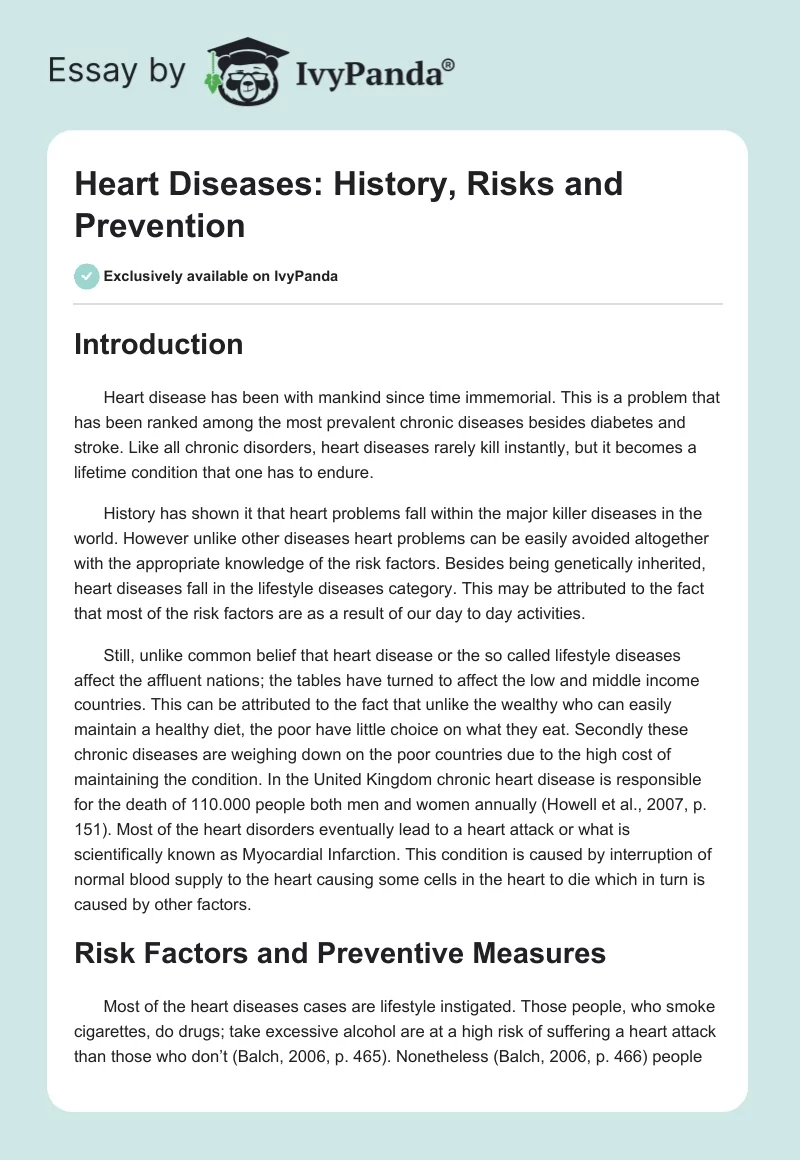Introduction
Heart disease has been with mankind since time immemorial. This is a problem that has been ranked among the most prevalent chronic diseases besides diabetes and stroke. Like all chronic disorders, heart diseases rarely kill instantly, but it becomes a lifetime condition that one has to endure.
History has shown it that heart problems fall within the major killer diseases in the world. However unlike other diseases heart problems can be easily avoided altogether with the appropriate knowledge of the risk factors. Besides being genetically inherited, heart diseases fall in the lifestyle diseases category. This may be attributed to the fact that most of the risk factors are as a result of our day to day activities.
Still, unlike common belief that heart disease or the so called lifestyle diseases affect the affluent nations; the tables have turned to affect the low and middle income countries. This can be attributed to the fact that unlike the wealthy who can easily maintain a healthy diet, the poor have little choice on what they eat. Secondly these chronic diseases are weighing down on the poor countries due to the high cost of maintaining the condition. In the United Kingdom chronic heart disease is responsible for the death of 110.000 people both men and women annually (Howell et al., 2007, p. 151). Most of the heart disorders eventually lead to a heart attack or what is scientifically known as Myocardial Infarction. This condition is caused by interruption of normal blood supply to the heart causing some cells in the heart to die which in turn is caused by other factors.
Risk Factors and Preventive Measures
Most of the heart diseases cases are lifestyle instigated. Those people, who smoke cigarettes, do drugs; take excessive alcohol are at a high risk of suffering a heart attack than those who don’t (Balch, 2006, p. 465). Nonetheless (Balch, 2006, p. 466) people with a family history of heart diseases, those suffering from hypertension, diabetes, high blood cholesterol, high homocysteine, sedentary people and those generally under stress are at a greater risk of succumbing to heart diseases.
Most of the risk factors are as a result of our daily diet. Knowledge of this and the careful substitution with more heart friendly diets would give us the upper hand at controlling heart attacks. It has been scientifically proven that over consumption of salt, fine sugars and refined white flour is a main cause of heart diseases. To reverse the situation, one is advised to reduce this intake and better still consume whole grain products.
Secondly eating food rich in vitamin B6 and B12 obtained from leafy green vegetables and fruits are highly recommended. These help to keep homocysteine levels in check. More so, drinking fresh vegetable juices should replace the high intake of processed juices which are known to have high levels of dangerous chemicals.
Over consumption of red meat has been known to increase the level of cholesterol in the body which in turn lead to the heart diseases.( Balch , 2006, p. 468) consuming soy proteins to replace red meat will effectively control the cholesterol levels in our bodies.
Unlike yester years when detection of adverse heart conditions lay in the hands of the physician with the stethoscope, many advanced technologies have made it easier to detect this heart conditions even at the very young stages (Howell et al., 2007, p. 161). These include stress testing, echocardiography, nuclear imaging and magnetic resonance imaging which assist to predict myocardial ischemia.
Conversely, a third of all heart attack cases occur without warning (Balch, 2006, p. 466). However, clear knowledge of some of the symptoms may save one. Though different from person to person and between genders, some of the common major symptoms include acute chest pains, shortness of breath, nausea, vomiting, palpitations, sweating and anxiety. It is advisable to consult a physician as soon as possible if one experiences the above symptoms.
References
Balch A. Phyllis. (2006). Prescription for Nutritional Healing. New York: Avery publishers. Web.
Howell, S., Pepper, C. & Spahn. R. D. (2007). Heart Disease and the Surgical Patient.. New York: CRC Press. Web.


